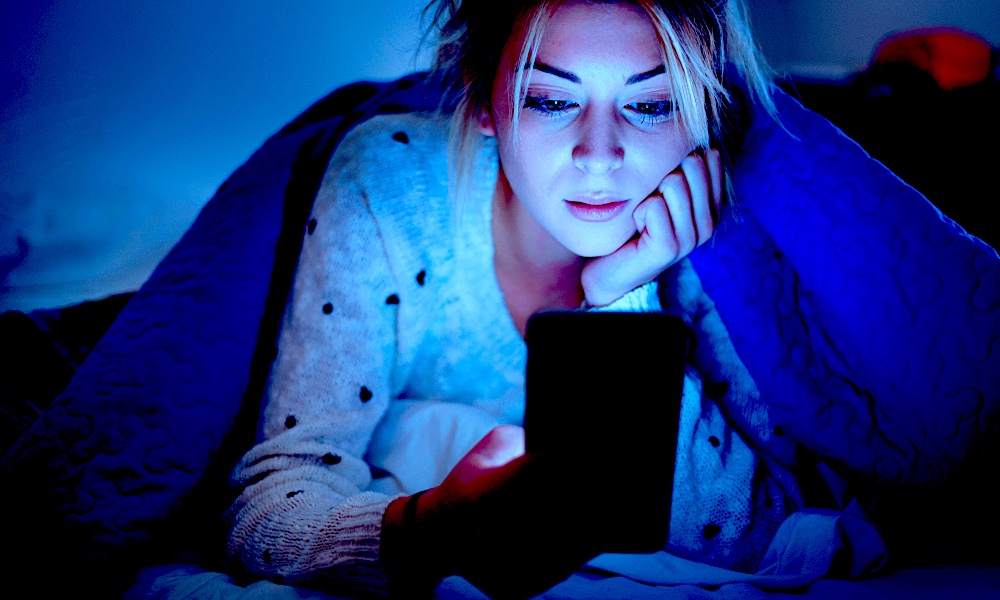Is Apple Developing a Smart Bed with Camera, Smart Sheets and More?
 Credit: Tommaso79 / Shutterstock
Credit: Tommaso79 / Shutterstock
Toggle Dark Mode
Back in 2017, Apple quietly acquired sleep tracking firm, Beddit — an upstart whose best-selling product was (and still is) widely considered the gold-standard of in-home smart accessories for tracking sleep activity.
Dubbed the Beddit 3 Sleep Monitoring System, the innovative product relies on a single, body-length strip of sensors, which, upon being draped across the user’s bed, is able to provide a by-the-moment analysis of their vital signs throughout the night.
While it’s unclear how much Apple ponied-up to acquire Beddit and their sleep-tracking secrets, just by making the purchase alone, it’s clear that Cupertino has interest in sleep tracking tech and eventually making that technology better than it currently is.
Apple’s “Next-Gen” Sleep Tracker
Those aspirations were all but confirmed this week when the U.S. Patent & Trademark Office published an all-new Apple Patent covering their invention of a descriptively “next-generation” sleep monitoring system, which relies on more advanced mechanisms like a full-size mat and/or ‘Smart Sheets’ to monitor vital signs, a camera for studying movements and more.
Apple’s invention, according to Patently Apple, specifically relates to advanced sensors and systems thereof which are designed to provide more accurate measurements of a user’s physiological statistics (i.e., heart rate, heat, oxygen, etc.) while they sleep.
“The sensors can be multi-element piezo sensors capable of generating multiple electrical signals, whereby the monitoring systems can receive the multiple electrical signals to analyze the user’s vital signs along multiple regions of the user’s body,” the publication explains, noting that (in some embodiments) “the piezo sensor can include one or more corrugations, such as peaks and valleys, to create localized regions with increased mechanical response (e.g., sensitivity) to force.”
The technology and mechanisms outlined in Apple’s patent are purely technical and somewhat ambiguous in nature — but the overall concept is best illustrated in the company’s patent (FIG. 1), which shows an example of the proposed system where (FIG. 2A) represents a top view of the sensor mat including “a single element piezo sensor” (much like the Beddit 3 system), and (FIG. 2B) shows the mat boasting a “multi-element piezo sensor” configuration.

Apple further notes that its sleep monitoring system could be made up of a mat, power source, control panel and even a camera sensor designed to perform certain actions like determining position, location and temperature of the user’s body while they’re sleeping.
The company even goes on to note that (in some embodiments) its sleep monitoring system and sensors could be embedded directly within a woven fabric, meaning the system and all its mechanisms could potentially be built into sheets, a comforter, blanket, pillowcase(s) or other bed-time textiles to allow for more conform (and accurate) monitoring.
Interestingly, the so-called ‘Smart Sheets’ concept hinted at in today’s patent was also covered in a previous Apple patent, suggesting that work on the invention is still ongoing.
Will Apple Actually Launch a Sleep Tracker?
Bearing in mind this is merely an Apple patent, there’s no clear or guaranteed indication that we’ll ever see an Apple-branded sleep tracking product like this. It would seem fitting, of course, not only considering that Apple paid to acquire Beddit in the first place, but also because the technology outlined in its patent is years ahead of what’s available on the market today.
In either case, Apple has expressed interest and is currently working with the U.S. Food and Drug Administration (FDA), to fast-track some of the more advanced health and wellness products its been working on behind-closed-doors, one of which could very well be a personal sleep monitor like we’ve never seen before.






